The smartphone market is a pretty crowded space, especially at the premium end of the spectrum. So, it can be hard for a phone brand to stand out from the crowd with its releases. Some might rely on a reputation, such as Apple and Samsung, while others make a name for themselves by offering quality at more affordable prices.
Enter the Motorola Edge 20.
As part of the Edge 20 series of phones, along with the more basic Edge 20 Fusion and fancier Edge 20 Pro, the Motorola Edge 20 sits in the middle of this series for both features and price. It’s positioned quite nicely, offering some great features but at a more affordable $699 AUD RRP price point.
But how does this phone stack up, especially in a competitive market when phone manufacturers are releasing new phones all the time? Read our review to find out more.
Motorola Edge 20 features and specs
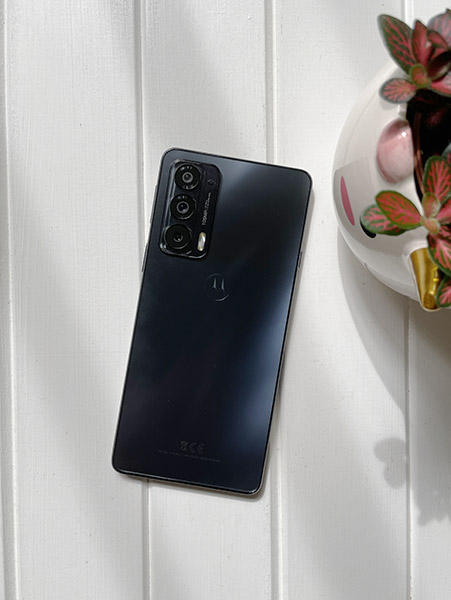
- $699 AUD RRP
- 5G compatibility
- 6.7 inch HDR10+ Max Vision OLED display + 144Hz refresh rate
- 128GB internal storage
- 8GB RAM
- Qualcomm Snapdragon 778G processor
- 4,000 mAh battery with 30W TurboPower charging
- Triple rear camera setup (108MP main + 16MP ultra-wide angle + 8MP Telephoto)
- 32MP front-facing camera
- 4K video
- Android 11
- Frosted Onyx colourway
- Available from JB Hi-Fi, Officeworks, Mobiliciti, Motorola and Lenovo (online)
| Motorola Edge 20 Pros | Motorola Edge 20 Cons |
|---|---|
|
|
Jump to:
Design and functionality
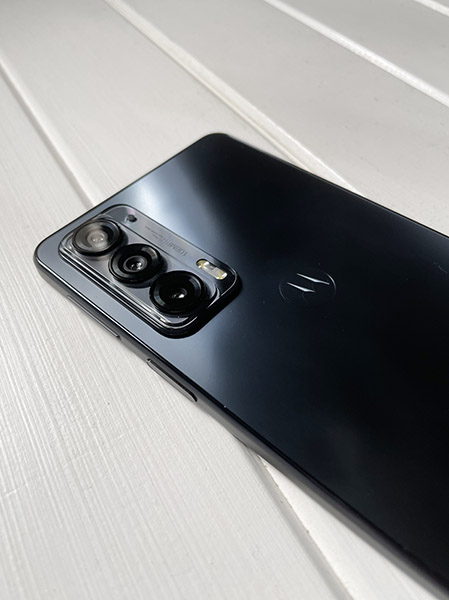
One thing you’ll notice with the Motorola Edge 20 pretty much as soon as you pick it up, is just how thin and light this phone is. Motorola says that the Edge 20 is the thinnest 5G phone they’ve made, and you can really feel it.
It’s also quite a large phone at 6.7 inches, so if you like bigger phones, you’ll be happy with the size. I found it a bit hard to use the phone one-handed, especially navigating from one side of the phone to the other. However, because of how lightweight it is, it felt really comfortable to use.
The finish on the back is a beautiful shiny but matte finish in this subtle dark grey. While it does feel plasticky to touch, the finish has the look and feel of a premium phone. Although it’s a simple and clean design, it looks beautiful and sleek. You’ll also get a clear jelly case included to protect from smudges and scratches.
You’ll find the camera bump setup running down the length of the phone on the left. It does stick out a fair bit, and much like the iPhone 13 Pro, this bump prevents the phone from sitting flat. If you wanted to lie the phone down and use it to play games, or perhaps type something, you’ll most likely find the phone rocks as you use it like this, even with the case on.
You can use fingerprint, facial and pin unlocking. I found the fingerprint unlock to be really quick and seamless. It uses the side button to house the fingerprint scanner, and I found this was one of the better-placed side button scanners compared to other devices. The button’s position was a bit higher than I’ve experienced on other devices, but this means I didn’t run the risk of resting my thumb or other fingers on the button. I also found that when I picked the phone up, I wasn’t resting on the scanner at all, so I didn’t have the phone attempting to unlock every time I picked it up. This might not matter to some people, but to me, I found this was one of the better-positioned fingerprint scanners in a smartphone.
Facial unlocking was a little on the slower side, but you can at least see the ‘progress’ of the camera processing your image as it unlocks; you know it’s working, but just a little slowly.
Overall, it’s a surprisingly nice phone to look at, and to use. I liked that it’s a little bit different to the smoother-styled phones that many other manufacturers produce, and even though I’m a sucker for a colourful phone, I really liked the finish and subtle elegance of the grey backing material.
Performance
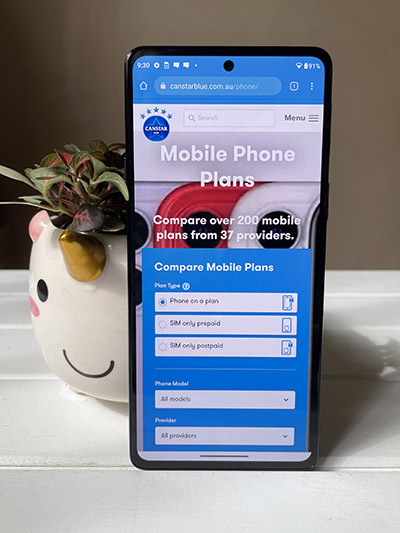
I’ll admit I have high expectations for a Motorola phone — my first ever mobile phone was a Motorola, and I’ll also think fondly of the Motorola Razr I had back in the day. The good news is that overall, the Edge 20 is a fantastic phone when it comes to performance for the price point.
Perhaps the first thing that was really noticeable about the Edge 20 is the display — that is, how fluid and seamless it is thanks to the 144Hz refresh rate. It’s also really clear and vibrant, making photos and videos pop. The phone actually has a default setting of ‘saturated’ in the colour display settings, which contributed to the vibrancy. You can change this to the ‘natural’ setting instead if you prefer more natural and muted colours, and you can also adjust the colours to be cooler or warmer. You’ll also need to change the settings if you want your screen to auto rotate when you turn the phone.
The Motorola Edge 20 is really simple and straightforward to use. I found it was really quick and seamless and I didn’t notice any issues with its performance in general. Scrolling through social media, playing games and watching video was great, and that speedy performance and vibrant display does make it feel like a more premium phone. The camera app was a little bit of a let-down though. It didn’t always respond to touch, especially when trying to navigate between modes, and it was just a bit slow in general.
One thing I did like was the Motorola ‘Gametime’ mode, which gives you access to tools and settings while you play. It hovers as a button on screen while you play, but you can change this to either remove it, or hide it at the side and open with a swipe. This mode allows you to record your screen, block calls and notifications, adjust touch sensitivity and more. It’s a handy feature if mobile gaming is your thing.
As for the battery, you’ll get a decent-sized 4,000mAh battery, with 30W TurboPower charging and a compatible charger in the box. Considering more manufacturers are ditching the included chargers, to have a 30W fast charger included with the phone is pretty generous. You do notice the difference with fast charge — with it charging from 0% to 100% in just over an hour.
The battery does a decent job at lasting — it can survive around a week on one charge when idle or with very light use. Around 10 minutes of gaming drained around 2% of the battery, while about an hour and ten minutes of HD video streaming used 9% of the battery. I felt like once you got into the heavy use, it drained the battery quite quickly, with it dropping around 10% in under 30 minutes of general use, including using the camera app. Overall though, I felt the battery stood up, and having the quick charge really makes a difference. If you’re a heavy user, that quick charge might come in handy from time to time.
When it comes to how the Edge 20 stands up with the viewing experience, it’s kind of mixed. The screen is stunning — the colours are vibrant (when using the ‘saturated’ colour setting) and the quality of the visuals is great. However, the built-in speaker is the let-down. I guess I was expecting a phone at this price point, which carries some great features and feels more premium, to have had a little bit more depth to it, but it was very flat. While it wasn’t quite the ‘tinny’ sound you experience from much cheaper phones, it just lacks a bit of oomph. This isn’t going to be a problem if you pretty much exclusively use headphones (keep in mind that there is no headphone jack, but headphones and an adaptor are included), but if you also tend to watch things without headphones, you might be disappointed, especially when watching live music videos.
Overall, the Motorola Edge 20 does everything you need it to, but with the feel of a device that costs more. It does have the smallest battery of the three Edge 20 phones, and it felt like it drained quicker, however the fast charging makes up for this. Whether you’re doing the basics or higher intensity activities, the Edge 20 performs as you’d hope it would.
Related article: iPhone 13 review: another stellar Apple smartphone
Cameras
When it comes to the cameras with the Edge 20, you’ll get a triple-rear camera setup with 108MP main, 16MP ultra-wide and 8MP telephoto and 3x zoom, plus a 32MP front-facing camera. There are also plenty of photo modes included — some modes are great and could be useful, while others are a little gimmicky.

Taking outdoor photos, the Edge 20 does a great job. The colours are fairly true to life and clear, although when you zoom into your photos for a closer look, you lose a bit of that clarity. Shooting in Ultra Res mode will reduce much of the noise you get from shooting in standard mode.

It does seem to struggle with cloudy days — it’s quite tricky to get it to focus on the clouds to avoid the over exposure of the sky, so you tend to get those blown out shots more than the balanced ones, although with some patience you can hit that balance.
Indoor photography is decent. You’ll need to hold your phone steady when taking low light or night mode images — as you do with most phones. I found it did a good job in dark and low light situations, both with and without night mode. Shooting in dark with one light source, it does tend to over expose the light when shooting with normal settings, while night mode picks up on much more detail.

The quality of macro mode was a surprise. Often macro mode can be a let down, and I wasn’t quite sure what to expect. However the results were clear, sharp and detailed. I was really impressed with how easily it could focus on the subject matter, both at a slight distance and within a couple of centimetres. It picked up fine details in textures, and the results were vibrant and colours true to life. It would struggle a bit to focus and identify the subject at times, but that was mostly when I was throwing it a difficult challenge. If you like taking macro photos, you’ll be pretty happy with the results of the Edge 20.
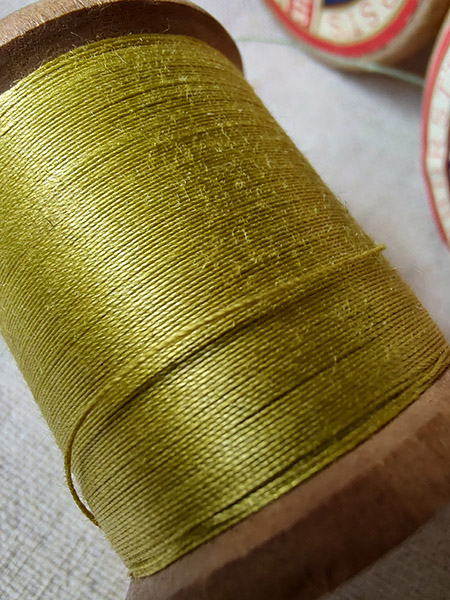
Portrait mode was a bit of a surprise, in that it was happy to take closer portrait photos than other devices. It also produces a really natural-looking result with the background blur. I even found at times that I wasn’t totally sure if portrait mode was working or not. It was only until I switched to standard mode and compared the portrait and standard shots that you can tell the difference in the background blur. But that’s also a testament to the camera quality in general.

I was really impressed by the sheer number of photo modes included. Yes, you’ll get the standards like Night Vision, portrait, panorama, along with slightly less common ultra res and Pro modes. But, you’ll also get cutout mode, which actually cuts out the background and keeps only the person (to mixed results), Cinemagraph mode, spot colour (selecting one colour to boost while you can also reduce other colours) and dual capture, which allows you to take a photo simultaneously with the front and back cameras. Some of these modes are useful, while others are a little gimmicky and it’s unlikely you’ll use them much or at all.
You’ll also get suggestions when taking photos, depending on the subject matter. So, it might suggest going to macro if you’re close to a subject, or switching to night mode when it’s dark, or portrait mode. I did find that when I was trying to take photos in macro mode, it kept suggesting portrait mode instead. This might have been because it mistook the subject of the macro photo as a face, so while the intuitive suggestions were handy, they occasionally missed the mark.
Recording video on the Edge 20 produces some decent results, but the sound is a slight disappointment when watching your video recording on the phone. You can also turn on the flashlight when you’re filming, which is convenient. If you turn it on when filming with the front-facing camera, you’ll get a slightly transparent white screen — enough to add some light, but transparent enough that you can still see yourself.
In addition to slow motion and time-lapse features, video also has a spot colour mode and dual capture mode. Dual capture mode for video is really well-designed. You can choose between captures using either the front and back camera, or two of the back cameras. If you choose two of the back lenses, you can choose the zoom option for each, so one you could film wide angle, and the other zoomed in. Not only can you select how to dual capture, but you can choose between layouts — either split screen (top and bottom) or a smaller screen at the top right. You can also choose what camera is positioned where. It’s a simple thing, but the customisable nature of this mode makes it a great option for anyone who likes vlogging.
Overall, for the price point, the Edge 20 has an excellent camera setup. It does a really great job at what you need it to, even though it’s a little extra when it comes to the sheer number of modes for photo and video included. While you might not get the ultra-crisp photos of premium phones, like the iPhone 13 Pro, you’ll still get some fantastic shots, and the colours are very true to life — not muted, warm or overly saturated, like what some other phones produce.
Related article: iPhone 13 Pro review: the most noticeable upgrade in an iPhone
Should I buy the Motorola Edge 20?
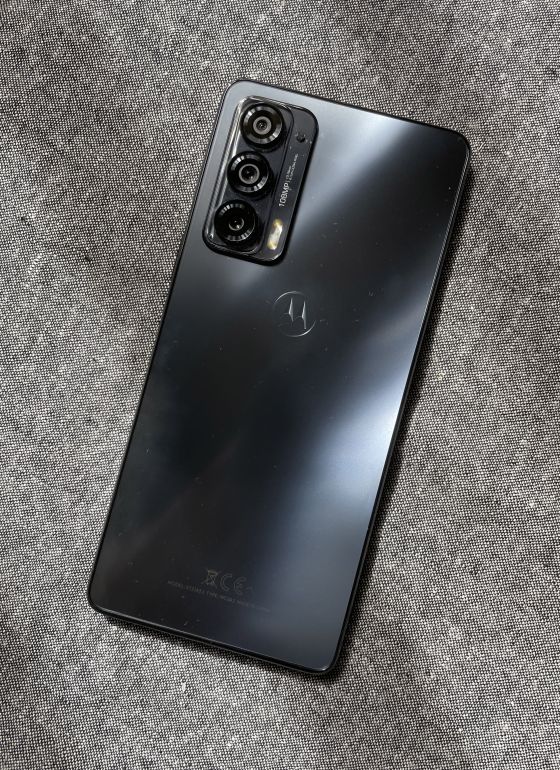
Motorola is often forgotten in the battle of the Android smartphones, with Samsung, Google and now OPPO mostly fighting it out amongst themselves. Considering Motorola’s history of producing great phones, it’s almost like a quiet achiever in the smartphone space.
While I have looked fondly at the Edge 20 with some nostalgia over my old Motorola phones, I wasn’t sure what to expect. But the Edge 20 seems to punch above its weight. That sub-$700 price tag is on the more expensive side of the mid-range spectrum, but the device sits in this range quite nicely. It offers that perfect balance between quality features with a touch of premium, but at an affordable price point.
The cameras definitely delivered some quality shots, it’s packed with all sorts of extra features that are fun to play around with, and the addition of a fast charger was rather generous. Overall, there was a lot to enjoy about the Edge 20 and not really much to detract from the overall experience.
If you’re looking at phones around this price point — one with a bit more bang for your buck, without venturing too close to that $1,000 price range, then the Edge 20 is worth keeping in your considerations. Whether you’ve used Motorola before or not is irrelevant — it’s a quality device and gives you a more premium feeling experience with a cheaper price tag.
| Consider the Motorola Edge 20 if | Don’t consider the Motorola Edge 20 if |
|---|---|
| You’re looking to buy for under $800 and want some more premium features and a bit more value for money. | You want a more sturdy-feeling phone or tend to watch videos without headphones. |
Compare phone plans
The Motorola Edge 20 is currently only available to buy outright from a range of retailers including JB Hi-Fi, Officeworks, Mobiliciti and the Motorola and Lenovo online stores. If the Edge 20 sounds like the phone for you, you’ll need to pick up a SIM-only phone plan. There are plenty of SIM-only phone plans to suit a range of needs, from cheap plans with little data, to data-hungry users. Keep in mind that for 5G connectivity, you’ll be limited to a selection of phone plans from Telstra, Optus, Vodafone, along with select plans from SpinTel and Aussie Broadband.
Here is a selection of postpaid plans from Canstar Blue’s database with a minimum of 20GB of data, listed in order of standard cost, lowest to highest, then by data allowance, largest to smallest. Try using our mobile phone plan comparison tool to see a wide range of plans from other providers. This table includes products with links to referral partners.
Here is a selection of prepaid plans from Canstar Blue’s database with a minimum of 10GB of data each month, listed in order of standard cost, lowest to highest, then by data allowance, largest to smallest. If you want to compare a larger range of offers from other providers, use our phone plan comparison tool. This table includes products with links to referral partners.

Product used for review/testing was a free sample provided by Motorola.

Share this article